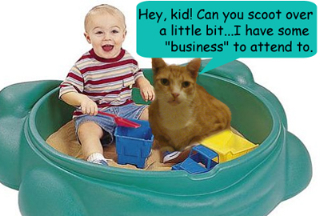Yesterday, a local story in a county newspaper in Texas carried the headline, “Salmonella can come from pets.”
The story reported, 
“Three cases of salmonella among children in Lubbock County since December 2008 are likely the result of exposure to reptiles, said Judy Davis, a spokeswoman for the city of Lubbock health department.”
The spokeswoman explained that handwashing is the key to preventing salmonella associated with reptiles and amphibians, such as snakes and turtles.
I just wanted to point out that, although less of a problem, handwashing is also important for preventing salmonella infections from furry pets.
 In 1999, the CDC received reports from three state health departments of outbreaks of multidrug-resistant Salmonella serotype Typhimurium infections in employees and clients of small animal veterinary clinics and an animal shelter.
In 1999, the CDC received reports from three state health departments of outbreaks of multidrug-resistant Salmonella serotype Typhimurium infections in employees and clients of small animal veterinary clinics and an animal shelter.
The CDC’s report stated,
“Salmonella infections usually are acquired by eating contaminated food [including produce and peanut butter]; however, direct contact with infected animals, including dogs and cats, also can result in exposure and infection.”
Doug and Phebus, at the end of the lengthy video (from September 2008) below, also recommend washing your hands after handling food and treats for your pets… especially when they’ve been recalled.

 I’ve just started my first year of
I’ve just started my first year of 
.jpg) My ex mother-in-law once told me that if I had a baby I would have to get rid of my cats. I replied, “No cats, no baby.” My step-brother’s cats mysteriously disappeared once his firstborn was old enough to crawl. Doug and I have two cats and two dogs and no intention of giving them up or sending them outdoors once the baby arrives. Sure, there’s dog hair all over the floors and it’s going to be a hassle learning to manage new and old responsibilities – and much more difficult to keep pet hair out of the baby’s mouth once she’s mobile. But we committed to the pets long ago and have been working on teaching them their order in the home.
My ex mother-in-law once told me that if I had a baby I would have to get rid of my cats. I replied, “No cats, no baby.” My step-brother’s cats mysteriously disappeared once his firstborn was old enough to crawl. Doug and I have two cats and two dogs and no intention of giving them up or sending them outdoors once the baby arrives. Sure, there’s dog hair all over the floors and it’s going to be a hassle learning to manage new and old responsibilities – and much more difficult to keep pet hair out of the baby’s mouth once she’s mobile. But we committed to the pets long ago and have been working on teaching them their order in the home. 
 If a child puts her fingers in her mouth, she can be infecting herself with the eggs of a parasite. In some cases, the hookworms will penetrate the skin, causing a condition called cutaneous larva migrans. In 2006,
If a child puts her fingers in her mouth, she can be infecting herself with the eggs of a parasite. In some cases, the hookworms will penetrate the skin, causing a condition called cutaneous larva migrans. In 2006,  Across New York City, the owners of delis and bodegas say, in this morning’s
Across New York City, the owners of delis and bodegas say, in this morning’s  In college football, the
In college football, the